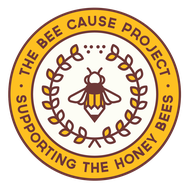Berkeley Unified School District Garden-Based Learning Curriculum Kindergarten - Third Grade
(View Complete Item Description)The Berkeley Unified School District has pioneered garden education since the first school garden was planted at LeConte Elementary in 1983. This single garden inspired many others, and over the next twelve years it evolved into a multi-school Gardening and Cooking Program with annual support from a federal grant of $1.9 million from the California Nutrition Network. We lost this funding in 2013, along with many other nutrition and garden education programs, at which point we refocused from a nutrition-based program to one that supports teachers and students in the academic classroom. This change encouraged us to develop a pilot curriculum in 2013–1014, with support from teachers, garden educators, and consultants from the Edible Schoolyard, Berkeley. Our team of experts gleaned from existing lessons and research to synthesize drafts to best fit our own school gardens. We rewrote the pilot lessons with input from our school communities and with incredible support from P. Rachel Levin, an English Language Coach, to develop academic and health targets accessible to all of our students. The curriculum builds upon many years of educating our students in the garden and scales up content across grades and lessons for instructional scaffolding. It is designed as an interactive teaching tool to be co-taught with classroom teachers and garden instructors as leads. Each lesson connects directly to standards: Next Generation Science, Common Core State, Physical Education, and Environmental and Health Education. Our concise and easy-to-follow lessons are a packed 45 minutes for preschool through fifth grade. Flexibility is important to us, so some lessons include several activities that teachers can choose from to accommodate their lesson plans. Consistency is also important, so we follow themes and lesson structure found in the Curriculum Map.
Material Type: Activity/Lab, Lesson Plan, Reading




















